






Bug Hotels, Toad Houses, and Other Backyard Wildlife Habitats Kids Can Create
If you and your family love the great outdoors, or if you’re looking for ways to get your kids interested in the flora and fauna around them, it’s time to build some backyard wildlife habitats. You’ll be astonished at how many insects, reptiles, mammals, and other animals you can support no matter the size of your yard. (Even without a yard, you can set up something in a local green space.)
If you build it, they really will come. And your family can spend time watching the animals’ fascinating lives and behavior! Here are some backyard wildlife habitat projects kids can create on their own.
1. Drill a simple bug hotel.
Calling all insect lovers! Provide shelter for your favorite bugs with this incredibly easy project that won’t cost you a dime.
Difficulty level: Easy
What to do: Use a drill to make holes of varying sizes in a chunk of log or piece of untreated wood. Hang it from a tree limb or prop it in a sheltered corner of your garden to draw all kinds of creepy-crawlies!
2. Kick your bug hotel up a notch.
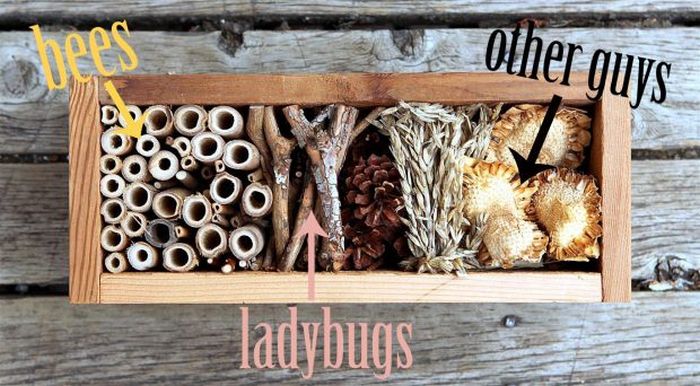
Photo credit: Garden Therapy
Invite even more insects to your backyard wildlife habitat with an insect hotel that includes a variety of shelter options. You can expect to lure bees, spiders, ladybugs, beetles, and even more.
Difficulty level: Medium
What to do: Build a simple rectangle of untreated lumber, then fill it with different materials that provide shelter for insects. Try to find natural materials if you can, and include holes, slits, and other types of crevices to suit every bug’s needs. Learn more about how to do this at Garden Therapy.
3. Create a mason bee house.
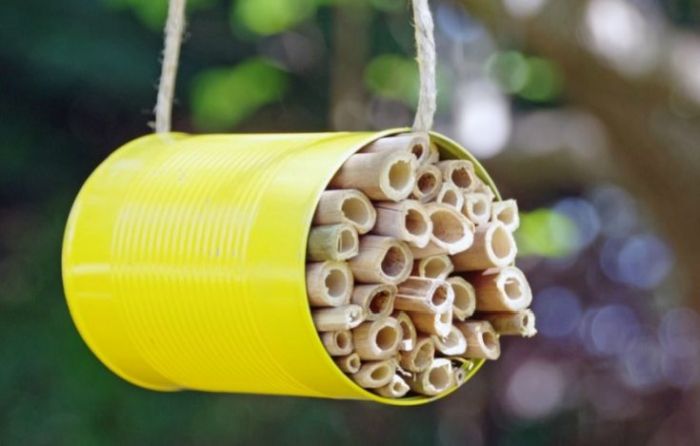
Photo credit: Turning the Clock Back
Mason bees are incredible pollinators, and they don’t live in hives like some other bees. Females build their own nests in holes, but will be happy to use one you provide. Mason bees are gentle and rarely sting, so shelter them with confidence!
Difficulty level: Easy
What to do: Mason bee houses are some of the easiest and most popular DIY backyard wildlife habitats to make. Build one using an empty can and hollow bamboo sticks (find them at the garden center in the plant stakes section) cut into shorter pieces. Learn more at Turning the Clock Back.
4. Open a frog hotel.
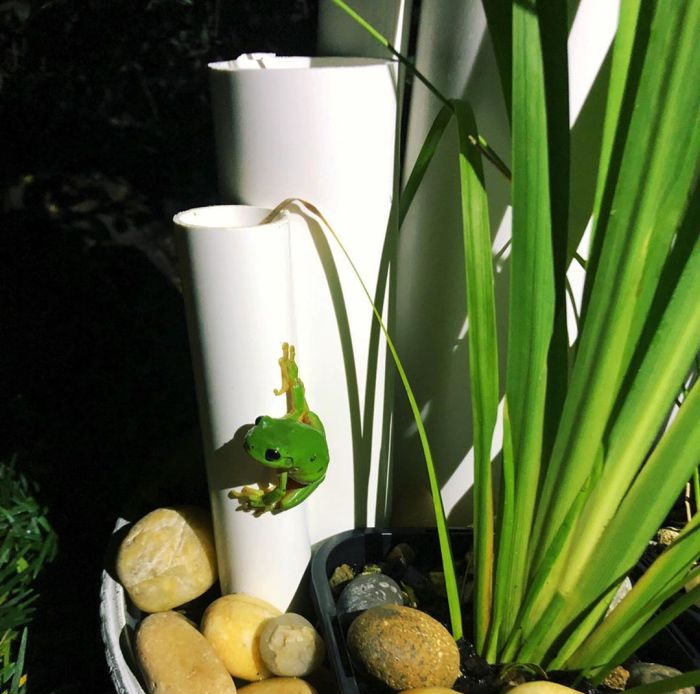
Photo credit: Wildlife Preservation Society of Queensland
Don’t forget to accommodate frogs in your backyard wildlife habitats! These water-loving critters need safe, moist places to hang out when they’re not out hunting for food. Drive PVC pipes into the ground or build a whole self-contained frog hotel.
Difficulty level: Medium
What to do: Fill a large tub with rocks. Cut several pieces of PVC pipe of varying widths and lengths, and prop them in the pot vertically. Add a container with a few native water plants, if you like. Fill the tub with water, place it in a shady place, and fill with more water regularly. Learn more at the Wildlife Preservation Society of Queensland.
5. Set up a toad house.
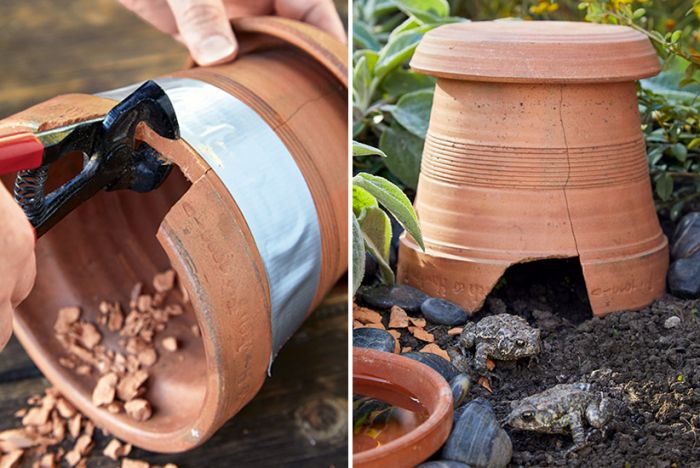
Photo credit: Garden Gate Magazine
Most toads come out at night to hunt insects and other small prey. During the day, they need a safe place to stay cool and hide. Toad houses provide the perfect spot!
Difficulty level: Easy
What to do: Find an old terra-cotta pot—any size will do. Wrap a strip of duct tape around it, then smack it gently with a hammer or use pliers to crack and remove a small section for a door. Remove the tape, decorate the pot if you like, then settle it into a shady part of your garden. Learn more from Garden Gate Magazine.
6. Build a one-board birdhouse.
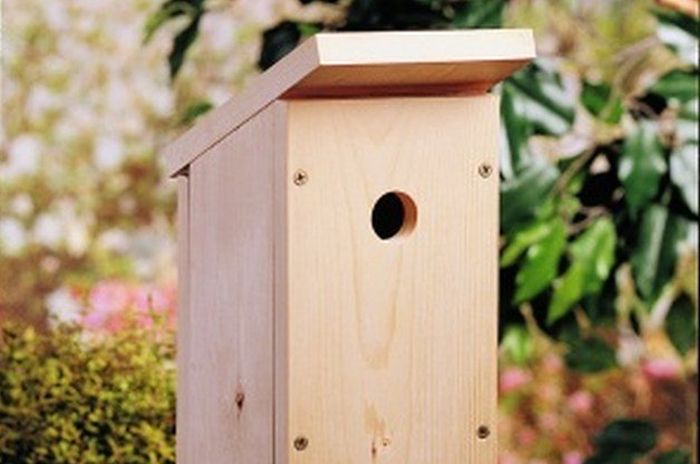
Image credit: Birds & Blooms Magazine
All backyard wildlife habitats should include a birdhouse or two. Good birdhouses don’t have perches (those allow easy access for predators) and should be cleaned out after each nesting season so they don’t harbor mites or disease. Build your own so you know it’s safe for your feathered friends!
Difficulty level: Medium
What to do: If you can use a saw and a hammer, you can build this simple birdhouse! The size of the hole you drill will determine the species of birds most likely to use it. Get the pattern and learn more at Birds & Blooms.
7. Hang a bat house.
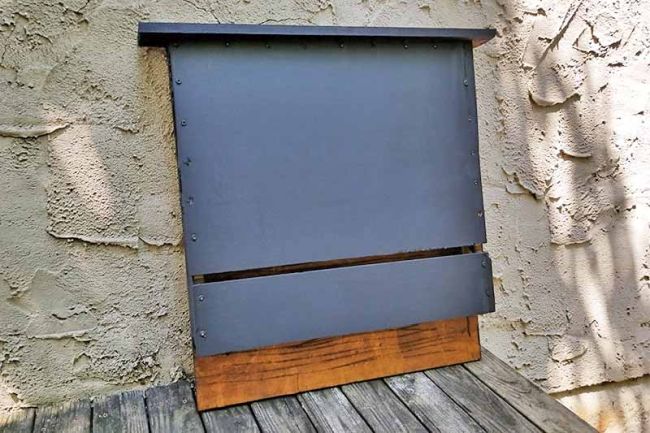
Photo credit: Gardener’s Path
Bats get a bad rap, but they really play a vital role in the ecosystem. Bats are pollinators and seed dispersers, and even better, they provide natural mosquito control! Bat houses work best when mounted high up near a body of water.
Difficulty level: Advanced
What to do: Though it looks pretty simple from the outside, a good bat house is carefully designed on the inside to make it a safe and cozy place for these flying mammals. Learn how to construct a good one at Gardener’s Path and discover the best place to install it from Bat Conservation International.
8. Assemble a wildlife stack.
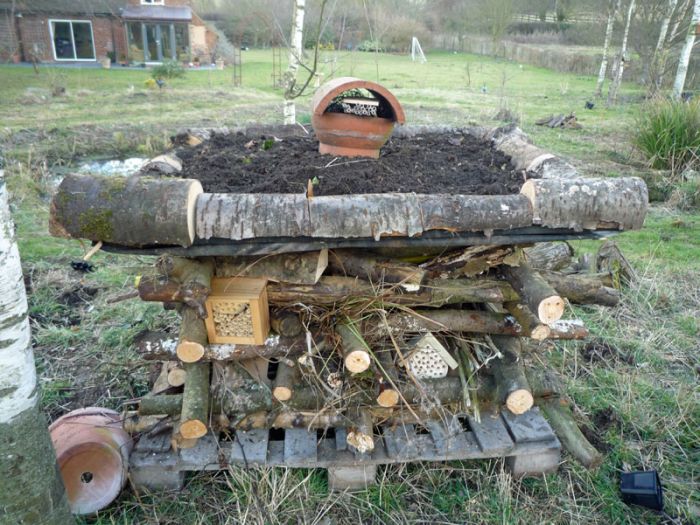
Photo credit: English Plants
Put all of these backyard wildlife habitats together, and what do you get? A wildlife stack! This is the ultimate way to support all the fauna in your neighborhood.
Difficulty level: Advanced
What to do: Build a wildlife stack from pallets, logs, or even cinder blocks and include lots of nooks and crannies for insects, reptiles, and even small mammals. Learn more from English Plants.
Can’t get enough time outside? Check out these 5 Creative Garden Ideas to Help Save the Bees, Feed Your Family, and More.

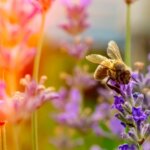

Comments are closed for this article.